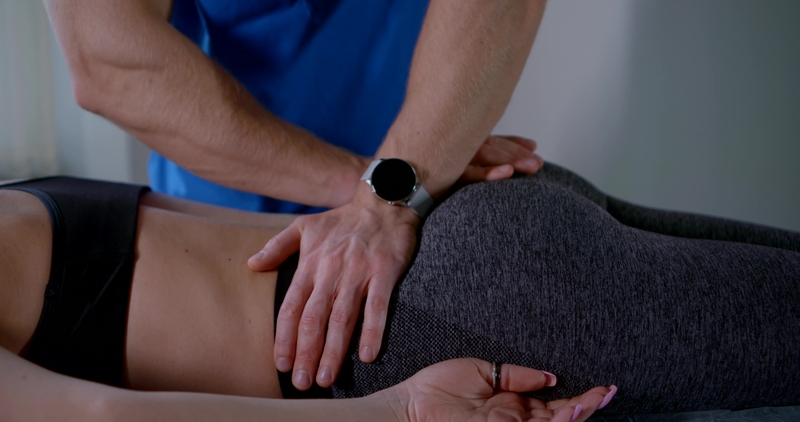
Coccydynia Tailbone Pain
Coccydynia is pain in and around the tailbone area or coccyx, which is located at the very bottom of the spinal column. The term “coccyx” originates from the Greek word for “cuckoo” because it resembles the beak of a bird with the tip pointed downward. “Dynia” directly translates to “pain,” making the term coccydynia translate literally to “pain of the coccyx.”
The coccyx is an insertion site for multiple tendons, muscles, and ligaments and provides weight-bearing support to a person who is seated. Due to the location and function of the coccyx, coccydynia pain has numerous potential causes and can present with a wide variety of symptoms.
Symptoms of Coccydynia
Symptoms of coccydynia include either a dull and achy or a piercing pain originating from the tailbone, pain that becomes more intense when sitting for a long period of time or changing from sitting to a standing position, pain during bowel movements, or pain during sexual intercourse. Other related symptoms of coccydynia include depression, anxiety, back pain, and poor sleep. A burning sensation can also occur anywhere from the bottom of the spine and hips to the perineum.
Diagnosis of Coccydynia
After obtaining a general medical history, a healthcare provider may inquire about any recent traumas that may have occurred to the coccyx area and may perform a visual or physical exam. To check for any tailbone injuries, an x-ray or a CT scan may be used. A bone scan or an MRI can be used to check for inflammation or cancer of the spine.
Causes of Coccydynia
There are several known causes of coccydynia. One of the most common occurs when the coccyx experiences any trauma, such as a hard fall. In these cases, the tailbone can be dislocated or fractured, resulting in coccydynia. A repetitive stress injury can strain the muscles around the coccyx, resulting in pain. Pregnant women may experience coccydynia because the body secretes hormones during the third trimester of pregnancy that softens the area between the sacrum and the coccyx to allow the coccyx to move during childbirth. This change may stretch the ligaments around the coccyx to an uncomfortable degree, resulting in additional pain. Being overweight may also result in additional pressure placed on the coccyx. Those who are severely underweight may not have enough fat in the buttocks to prevent the coccyx from rubbing against the muscles, ligaments, and tendons, resulting in coccyx pain.
Sitting for long periods of time can increase coccyx, especially when sitting on a particularly hard surface. In extremely rare cases, tailbone pain is a sign of cancer.
Coccydynia Treatment
Fortunately, most cases of coccydynia resolve spontaneously over time without undergoing any sort of treatment. Of those patients who do require treatment to relieve their symptoms, the vast majority find success with at-home remedies to address their coccydynia.
Taking anti-inflammatory drugs (NSAIDs) such as ibuprofen can reduce the pain and swelling associated with coccydynia. Leaning forward when sitting, decreasing overall sitting time, taking a hot bath, and using a wedge-shaped cushion when sitting can also aid in pain relief. Sleeping on one’s side as opposed to one’s back can help to alleviate coccydynia when sleeping. Engaging in stretching and strengthening the muscles of the lower back and pelvic floor, taking stool softeners to reduce any pain associated with passing stool, and applying hot and cold packs to the lower back are all methods of treating coccydynia at home. Standing up and walking around will also decrease pressure on the coccyx, thereby reducing pain and inflammation.
Those who suffer from worsening symptoms or symptoms that fail to resolve after a period of several weeks should seek medical advice from a professional that specializes in the treatment of the pelvic floor. RS Surgical will look for any other sources of discomfort that might be mimicking coccydynia and address them as needed. Nonsurgical treatments for coccydynia include massage therapy and stretching exercises under the guidance of a physical therapist. RS Surgical offers in-office treatments that include pelvic floor rehabilitation, ergonomic adaptations, manual manipulation, and deep-tissue massages to the areas of inflammation. Injections of any sort are typically not utilized as they generally provide only short-term relief. Surgery to treat coccydynia is rare. Any symptoms that accompany coccydynia, such as anxiety, depression, or sciatica, should also be treated as needed. Following treatment for coccydynia, most patients experience long-lasting relief and a return to their previous quality of life.

